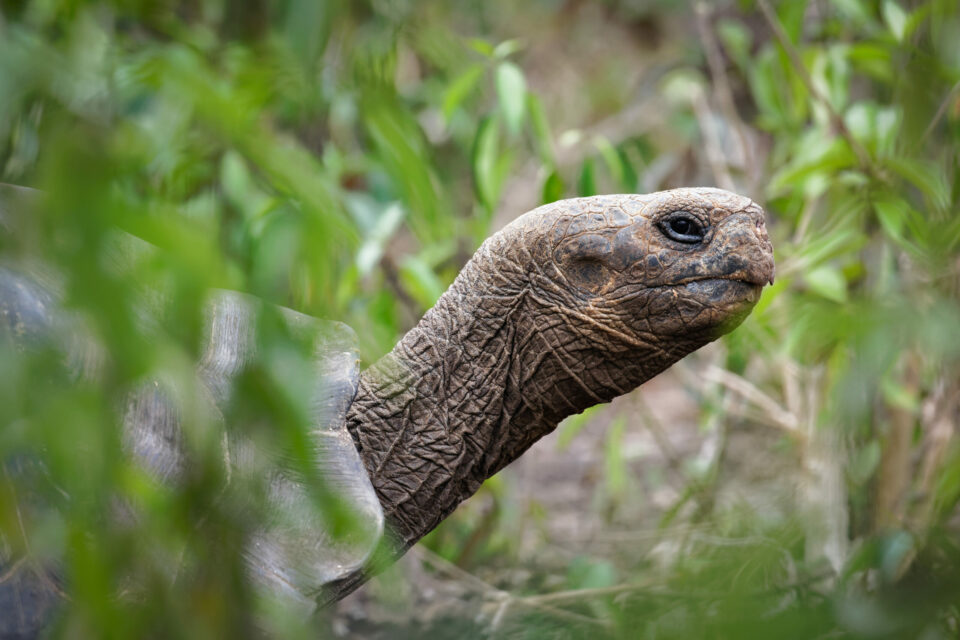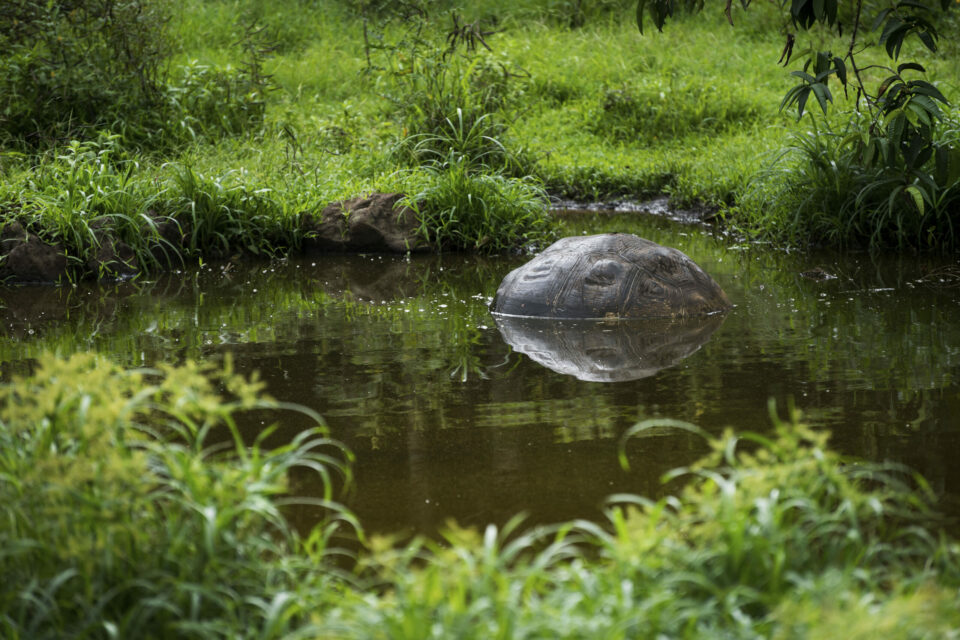

New Species Of Galapagos Tortoise Announced
Yesterday a new species of Galapagos giant tortoise was announced in a paper by Poulakakis et al. The new species has been named the Eastern Santa Cruz tortoise, Chelonoidis donfaustoi.
Yesterday a new species of Galapagos giant tortoise was announced in a paper by Poulakakis et al. The new species has been named the Eastern Santa Cruz tortoise, Chelonoidis donfaustoi.
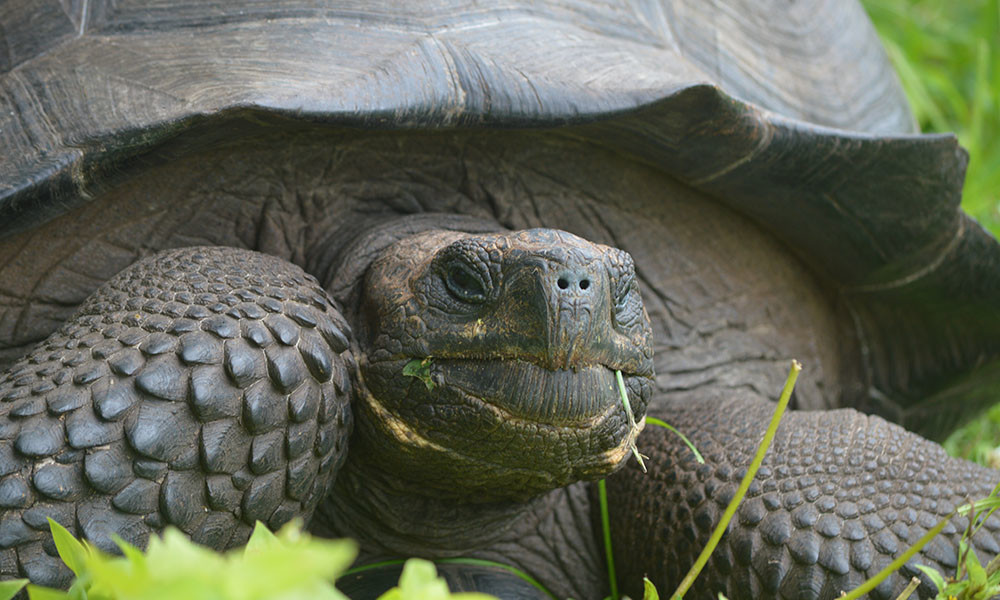
It was previously believed that on the island of Santa Cruz, there was just one giant tortoise species, Chelonoidis porteri. However, a newly published study has proven that there are in fact two evolutionary and spatially distinct lineages on the island, one on the western side (previously known as the Reserva population) and one on the eastern side of the island (previously known as the Cerro Fatal population).
DNA analysis from tortoises and museum specimens has confirmed that the two populations are genetically distinctive, thus making the Cerro Fatal population a different species to the Reserva population. To recognise the new population, the Reserva population which was previously known as just the Santa Cruz tortoise, will now be known as the Western Santa Cruz tortoise.
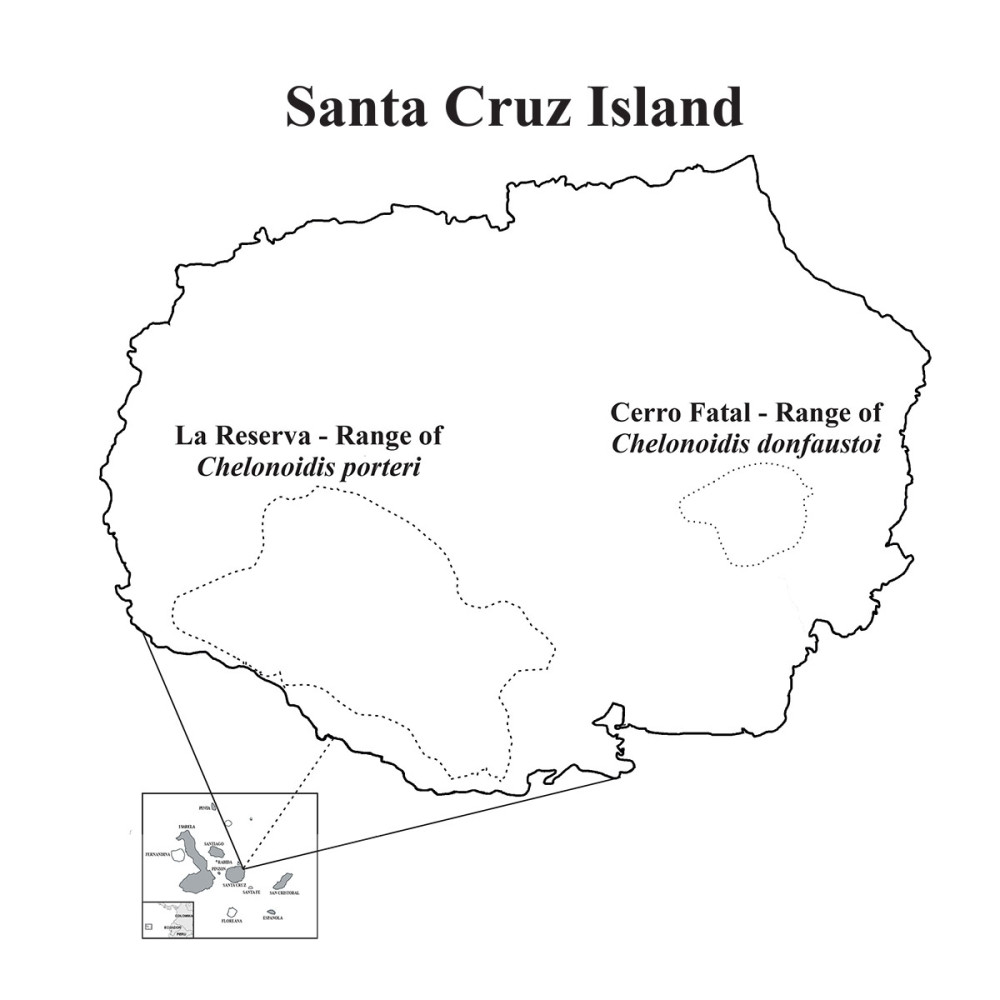
Genetically, the two tortoise species are among the most divergent taxa within the Archipelago, and likely arrived on Santa Cruz island from different source islands. The Western Santa Cruz tortoise is part of the oldest lineage in the Galapagos, having diverged approximately 1.74 million years ago, whereas the newly described Eastern Santa Cruz tortoise is much younger, having diverged approximately 0.43 million years ago.
The new species is named after Fausto Llerena Sánchez, a park ranger for the Galapagos National Park (GNP) who devoted 43 years of service to giant tortoise conservation. He was the primary caretaker of endangered tortoises in captivity, and was the caretaker of Lonesome George. He was one of the first to explore tortoise habitat throughout the archipelago and several Galapagos tortoise lineages are still extant, in great part due to his dedication, ingenuity and patience.
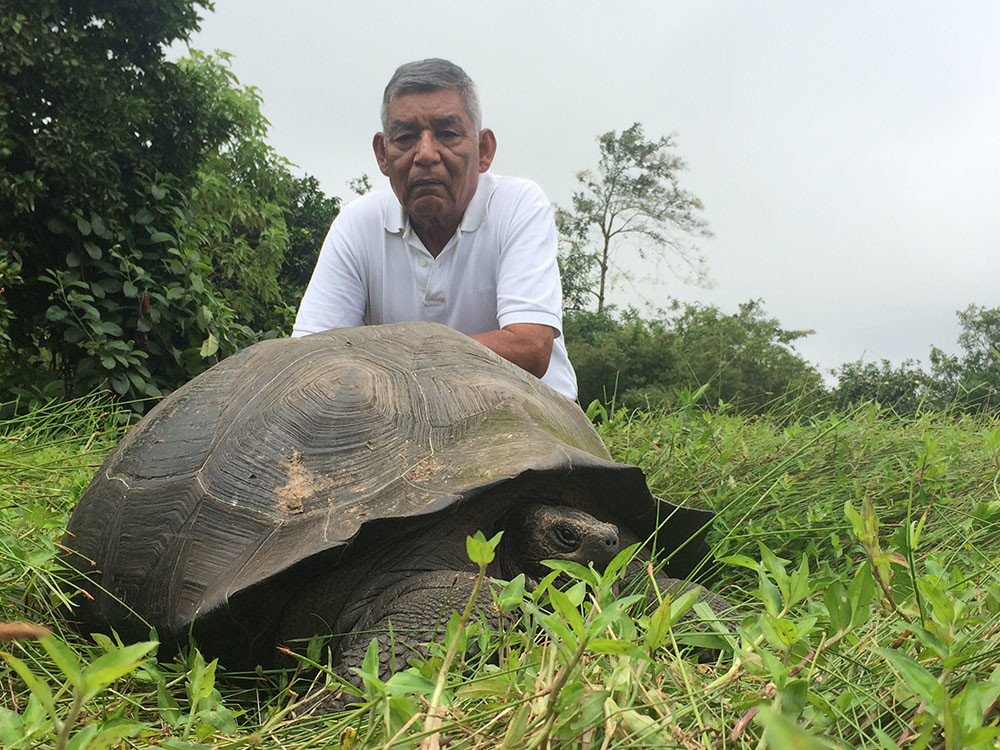
Don Fausto with an Eastern Santa Cruz tortoise
The revised taxonomy does have implications on the conservation management of these two species. The Western Santa Cruz tortoise now has a reduced range, confined to the western and south western parts of the island, and an estimated population of several thousand individuals. The Eastern Santa Cruz tortoise is confined to the eastern parts of the island, and has an even smaller population of approximately only 250 individuals.
Further studies on the new tortoise species will be conducted to see whether the small range, low abundance and reduced genetic diversity make it vulnerable to conservation threats. Investigations will be carried out to see what threats there are to this new species and to determine effective ways to mitigate them. Of particular importance, is ensuring that no human-mediated transport of tortoises occurs between the two sides of Santa Cruz Island as the two species’ ranges are now linked via a single agricultural zone.
Related articles

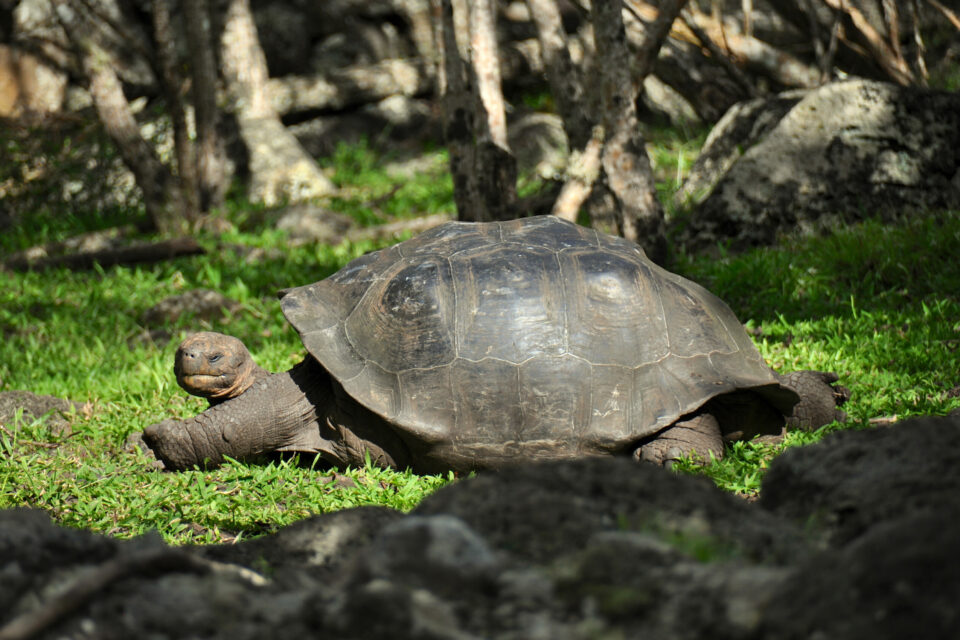
The return of the Floreana giant tortoise
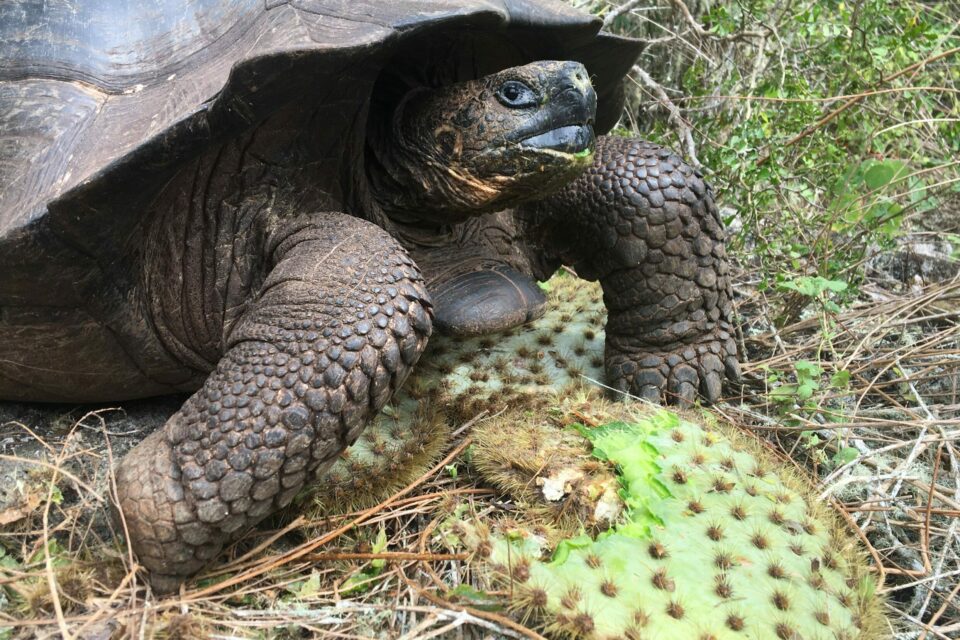
Galapagos giant tortoises: An update from the field
